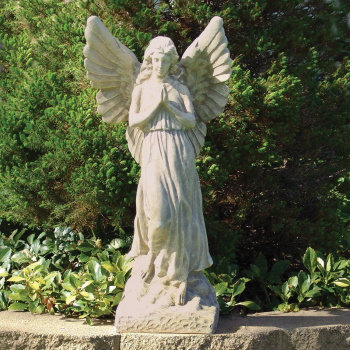Cremation is the process of reducing the body to ashes and bone fragments through the use of intense heat. The process usually takes from two to four hours. The cremated remains are then pulverized to break up larger bone fragments to a granular texture.
Cremation offers an affordable alternative to traditional body burial. While direct cremation can significantly reduce funeral home costs, you can reap additional financial benefits from the cemetery and headstone dealer. If you choose not to bury the cremated remains - and many people do not - you can eliminate many items that make the traditional funeral so expensive.
But price is not the only advantage in choosing direct cremation. Many people prefer cremation because the cremains (i.e. ashes) are portable. This allows families to take remains with them when they move. Many people also feel that choosing cremation over body burial is friendlier to the environment because no land is disturbed.
Another advantage to cremation is it's simpler and more expedient. The entire affair usually takes place in just two or three days; furthermore, cremation requires less time commitment from the family. This can be especially important if surviving family members are ill, disabled, or live far away. Cremation also offers a wide range of disposition options. While most families decide to keep remains at home, other options exist.
How Does Cremation Process Work?
Cremation is completed at a crematorium. Relatives contact the funeral home or mortuary to make arrangements for the services. The funeral homes or mortuaries do not have crematory facilities on site and subcontract the work out to a reputable third-party vendor. Relatives may also contact a cremation society. Cremation societies maintain their own cremation facility on the premises.
Some states mandate a waiting period of at least 24 to 48 hours before the actual cremation takes place. After the waiting period passes, the body is taken to the crematorium and placed in a coffin or container with any pacemakers, prosthetics, or mechanical or radioactive devices removed so as not to damage the cremation chamber.
The coffin or container is placed into the cremation chamber. Intense heat at 1500 to 2100 degrees Fahrenheit vaporizes the body until it is reduced to ashes. The process usually takes between one to four hours, depending on the size of the body. Bones that have not burned are crushed into ashes. The ashes are cooled from one to two hours before they are given in a sealed container to a relative. The remains generally weigh between three to nine pounds, depending on the size of the deceased.
What Happens to the Remains?
The ashes, or remains, may be buried in a cemetery or special location (with the appropriate permissions), placed in the columbarium or vault, handled commercially for an additional fee, or scattered in a location of the deceased's or relative's choosing. The remains have been ground into coarse sand-like particles that are environmentally safe for scattering.
Funeral or Memorial Services With Cremation
Family members may hold a funeral or memorial service before or after the cremation. If a viewing is desired before cremation, family members can rent caskets from the funeral home for this purpose. On the other hand, a memorial service may be held after a cremation, with or without the remains. The remains stored in an urn are placed in a designated viewing area for the service.
What Costs Are Associated With Cremation?
Average Cost of Cremation in Texas: $1,000. Using an undertaker to secure permits, death certificates, or other services, can run upwards of over $1000. Families who own the bodies and make their own arrangements incur costs that run between $100 and $300. The urns which are used to store the remains may require additional costs, as will any burial plots or storage in the columbarium.
Scattering of Ashes
There are very few state-wide laws in Texas that prevent your from storing or scattering a person or pet's ashes. The ashes can be kept in a grave, crypt, urn, or other container of a family's choosing and if the decision is made to scatter, there are many options available.
If you wish to scatter ashes in Texas, state law allows you to do so over "uninhabited public land, over a public waterway or sea, or on the private property of a consenting owner". Unless the container is biodegradable, Texas law requires you to remove the ashes from the container before scattering.
Even though there are limited state laws in Texas related to storing or scattering ashes, certain cities or counties may have local restrictions on scattering ashes. If you plan on scattering ashes, it's a good idea to check with local government offices in the area where you plan to do it.
How Do Religions View Cremation?
Cremation has been accepted by most Western societies as an alternative to traditional burials. In places such as England and Japan, where land is scarce, cremation rates of 90% are not uncommon. The Catholic religion condones cremation as long as it does not go against Church teachings. There are some religions that forbid the use of cremation and see it as undignified. These religions include some fundamentalist Christian sects, Islam, and the Greek and Orthodox Jewish religions.
Related Articles:
Home | About | Articles | Resources | Site Map | Privacy Policy
Elder Options of Texas
Copyright 2001-2024
All Rights Reserved
DISCLAIMER: Links to other websites or references to products, services or publications do not imply the endorsement or approval of such websites, products, services or publications by Elder Options of Texas. The determination of the need for senior care services and the choice of a facility is an extremely important decision. Please make your own independent investigation.




